This trip to Bolivia was a bit of an experiment to see how new strategies in bike touring work in a typically "heavyweight" place and terrain. The back roads of South America have unlimited potential for bikepacking and the benefits of going lighter are obvious. It's easier to get public transport without so much crap, the typically abusive roads are notorious for breaking racks, and with the relentless climbing in the Andes, the reduced weight is a very welcome thing. We had backpacks, but for a short duration trip of about 3 weeks biking time, this was an acceptable compromise.
Due to our complex travel plans, I arranged to have a quality pair of bikes rented to keep the airline hassles and expenses down. This might be hard in most places down there, but La Paz is home to Gravity Assisted Mountain Biking. I met "El Jefe" Alistair Mathews on my last trip there in 2005. He had some older Kona hardtail frames kicking around which he had built up for us. They worked flawlessly and were indestructible. Gravity runs a top notch operation and is the epicenter of the mountain bike scene in Bolivia. All we had to do was swap out tires & pedals, strap on the bags and we were on our way.
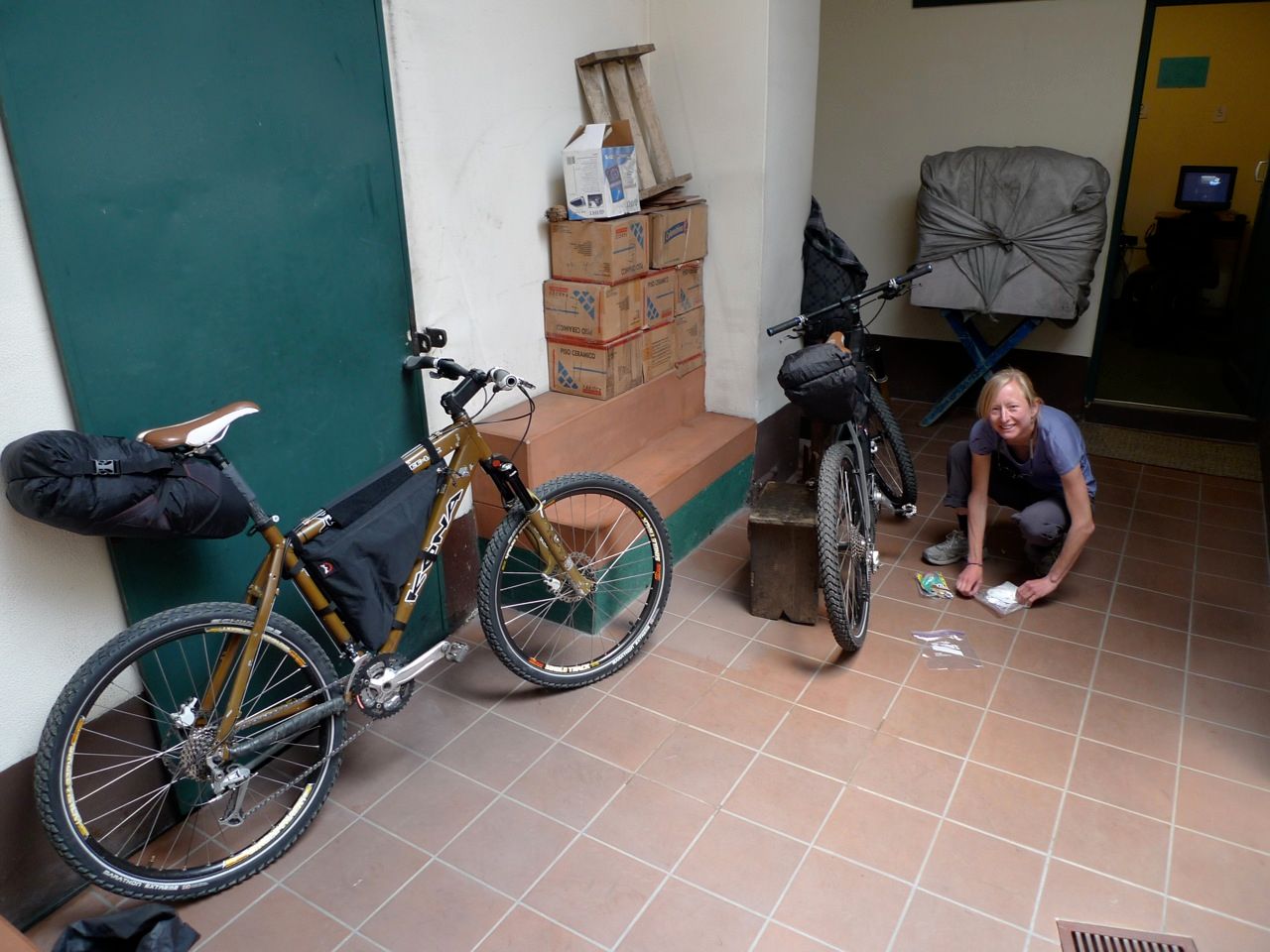
Next up was deciding on routes.. this is trickier than it sounds. I had general ideas but needed on the ground info to connect the dots. The good roads for biking are seldom on the national maps, the government map office is a bureaucratic mess and basically zero help at all. To dig deeper local knowledge was required (and extensive memorization of google earth in internet cafes!). Through friends of friends I met locals Jeff Sandifort, a climbing guide, and Travis Grey. I plied them with questions, in the end Travis planted the route seeds for the next 3 weeks. We would head to Sorata for a short loop first to acclimatize more, and then try an ambitious route he had previously done which traversed the end of the Cordillera Real, and entered the Cordillera Quisma Cruz.
This was our map for 4 days, GPS what?? topofusion who

chuckle chuckle...
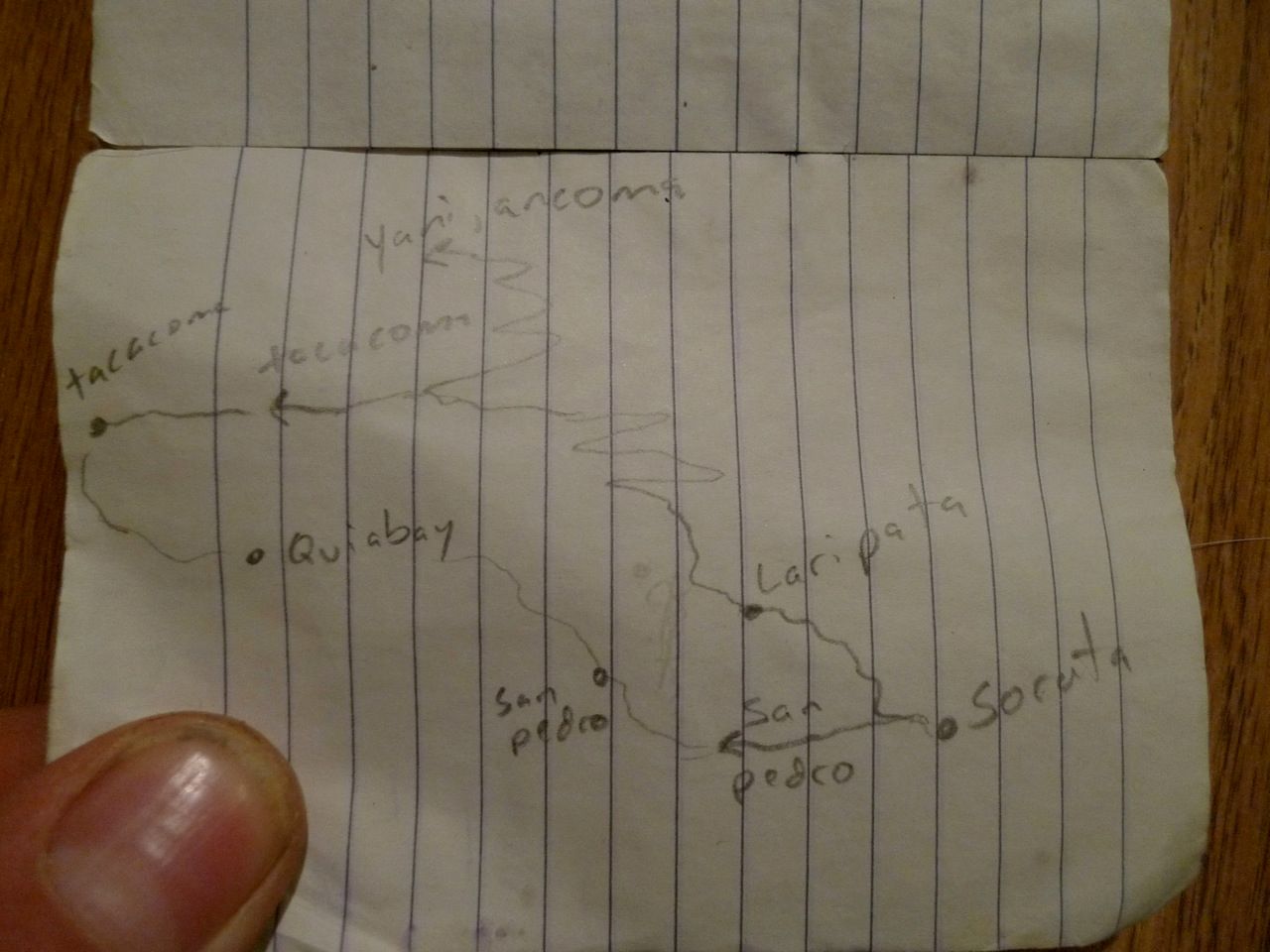
La Paz is a breathtaking city, both scenically with it's location in a deep valley right up against the Cordillera Real and literally with an elevation of 12,000'-13,000'.
Getting out of town usually involves maneuvering up through super steep crowded streets. Sucking exhaust fumes in the thin air, and jumping in a collectivo that fits far more people than it should.. Nevado Mururata and Illimani in the distance
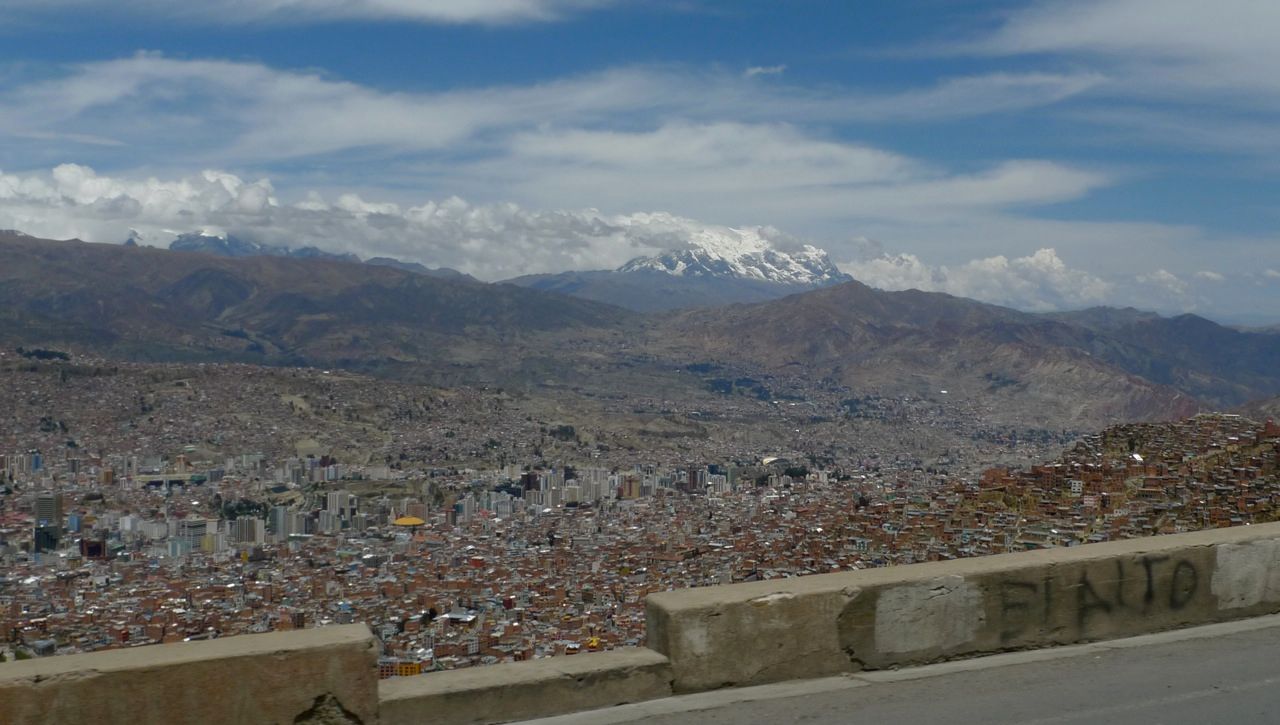

Sorata is a beautiful town, it sees quite a bit of tourist traffic for good reason. The lower elevation at 8,500' was welcome, along with the touch of humidity that the air held being on the East side of the Cordillera Real.
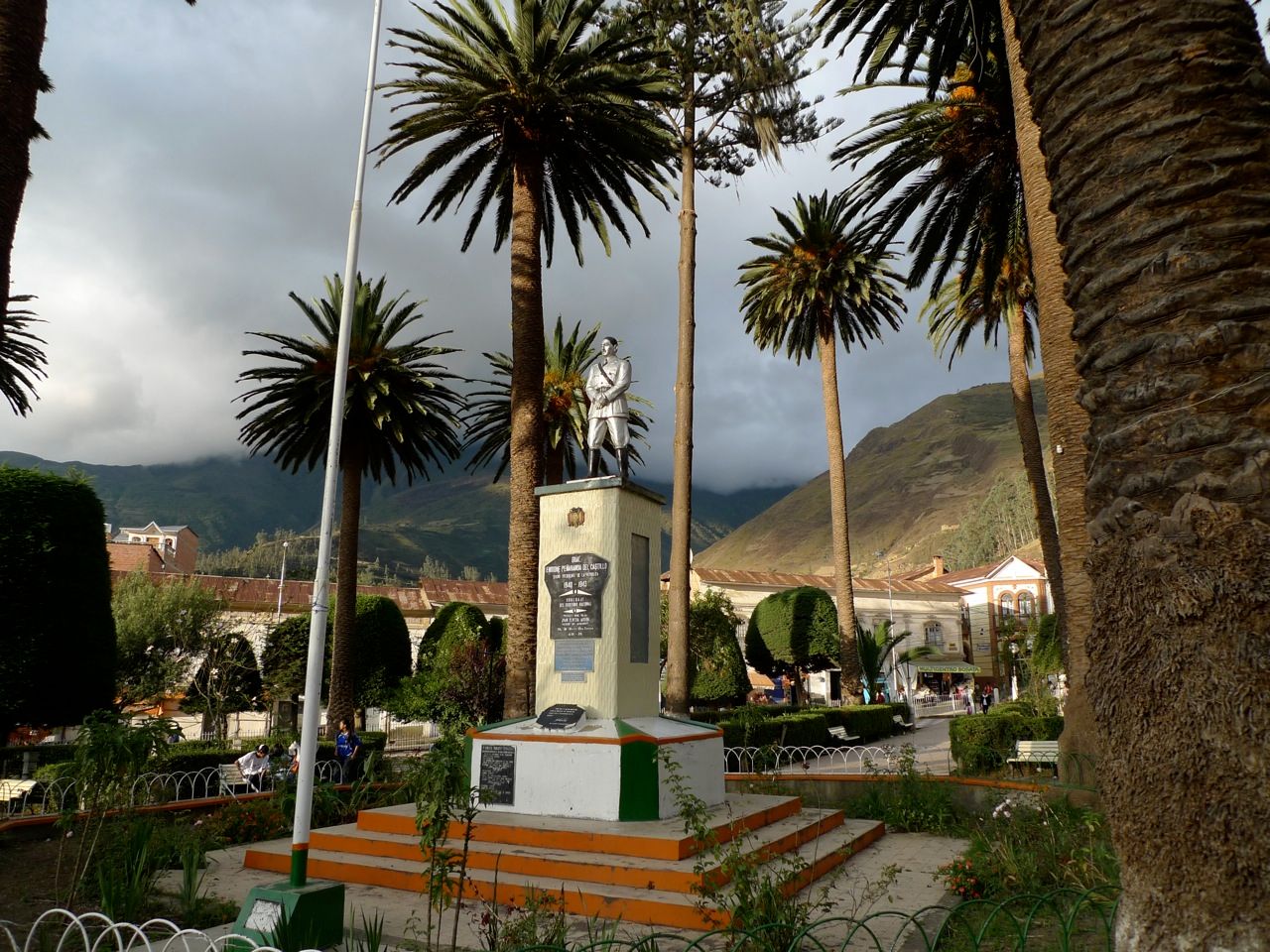
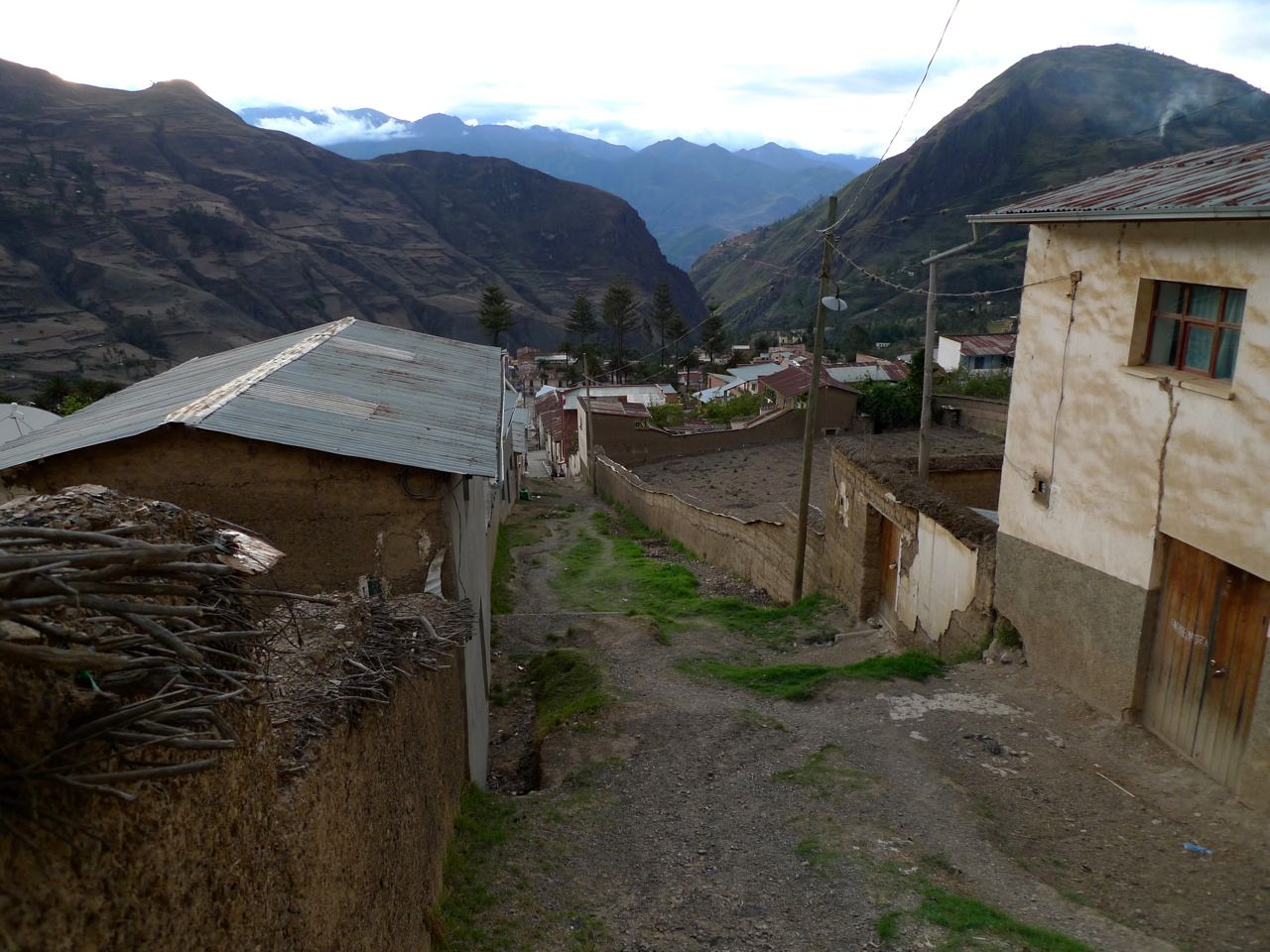
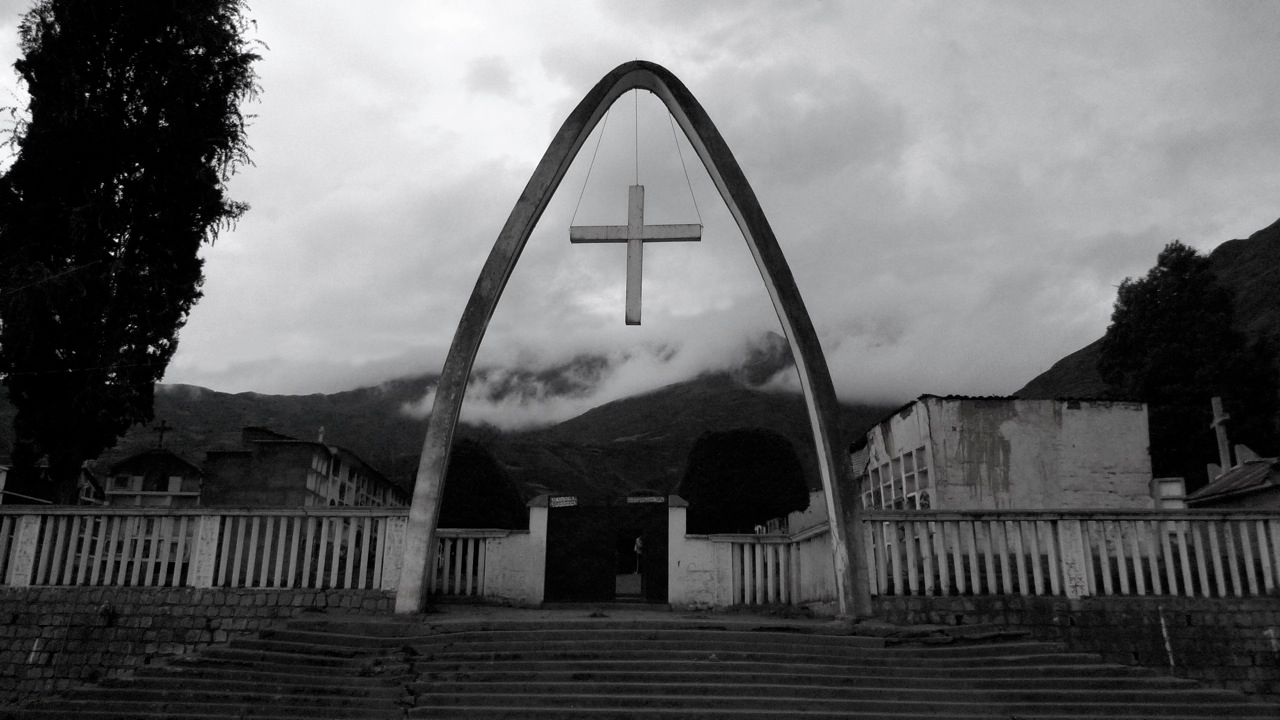
The next morning we finally got rolling, it was exciting to be on the bikes after traveling all this way and dealing with the logistics. Our route basically climbed all day to 13,000' where we would traverse on a old road bed out of use to a town, where we'd pick up the current road and loop around the low side of all the valley's that we'd short cut by being so high in the beginning.
Leaving Sorata, The Ancohuma-Illampu Massif (21,000') rises right above town in the distance:

A bit of rain down in the valley once we got above town, but it avoided us...
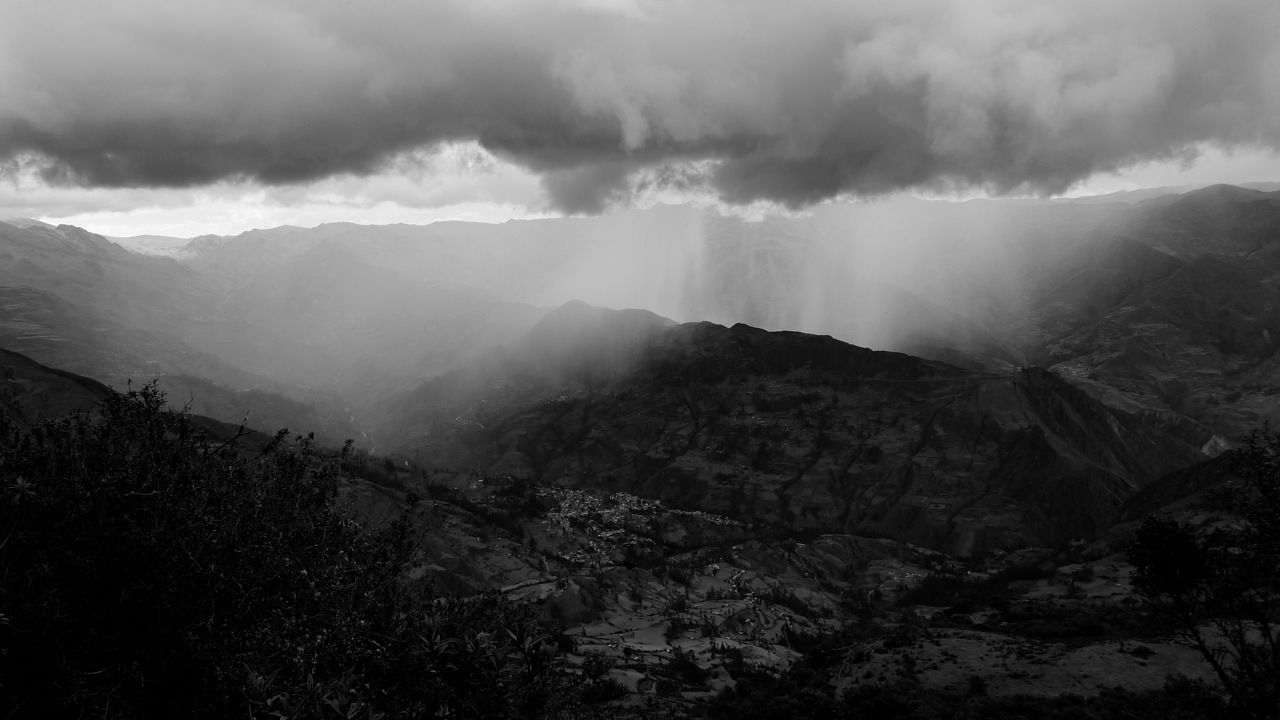
up and up and up..
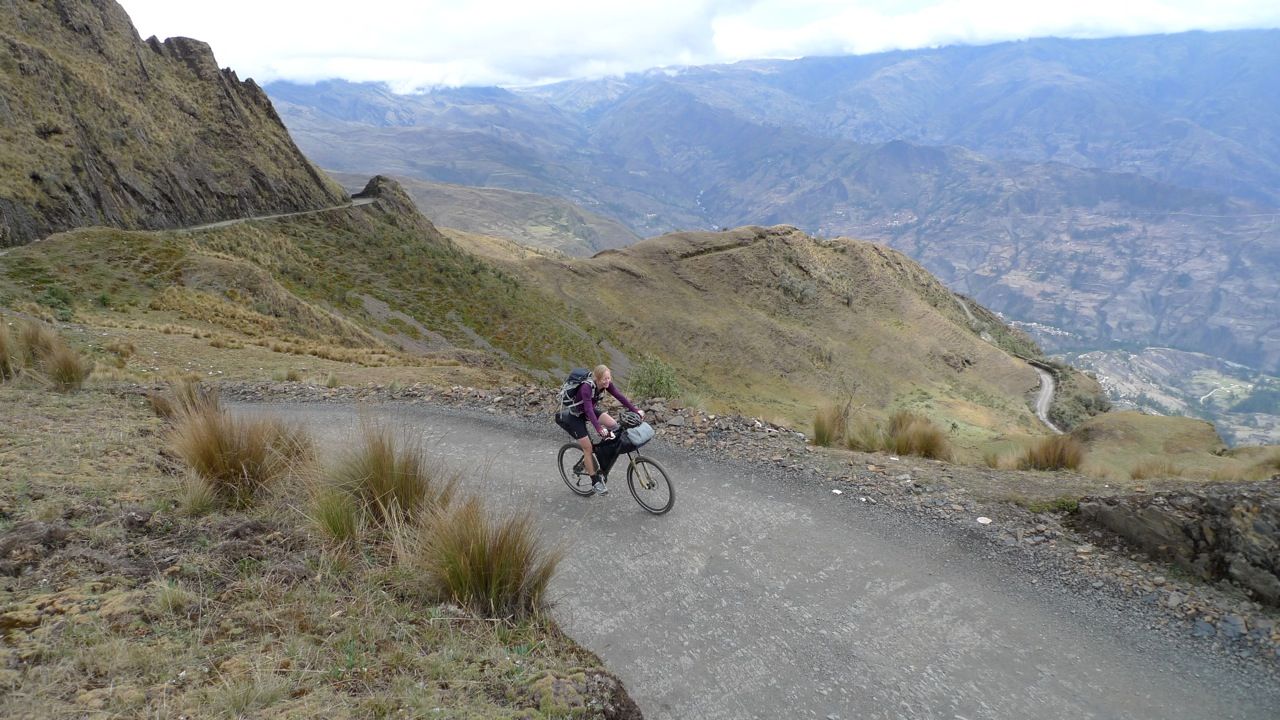
after like 6 hrs we could finally see where the road diverged and leveled off somewhat at 13,000'.
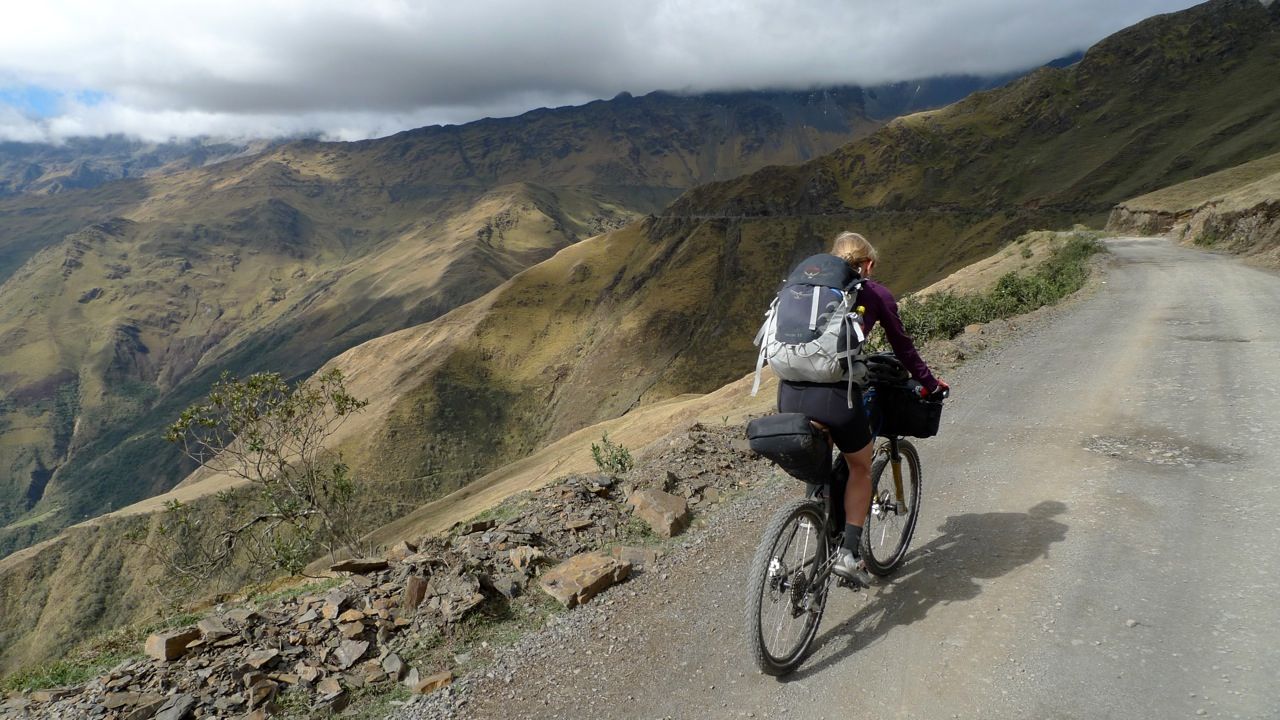
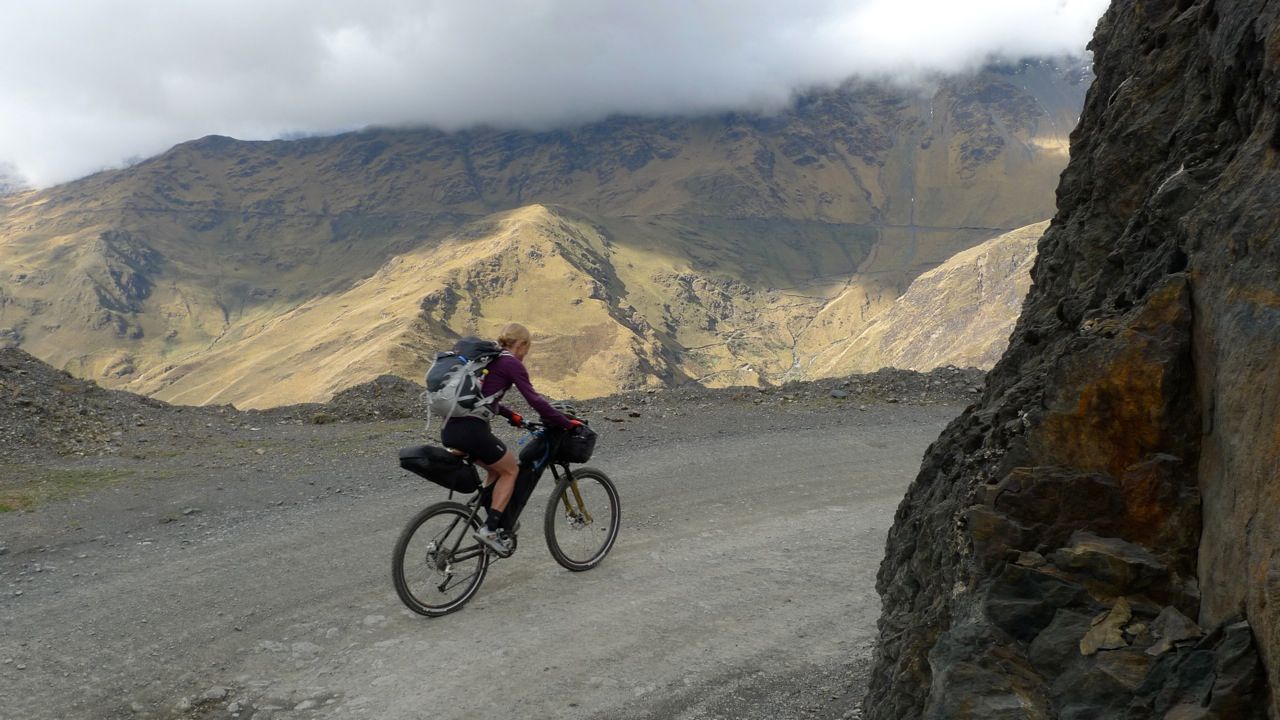
Sucking wind, we made the turn off onto the Ruta Antigua, the road we were on just kept climbing to over 15,500'...
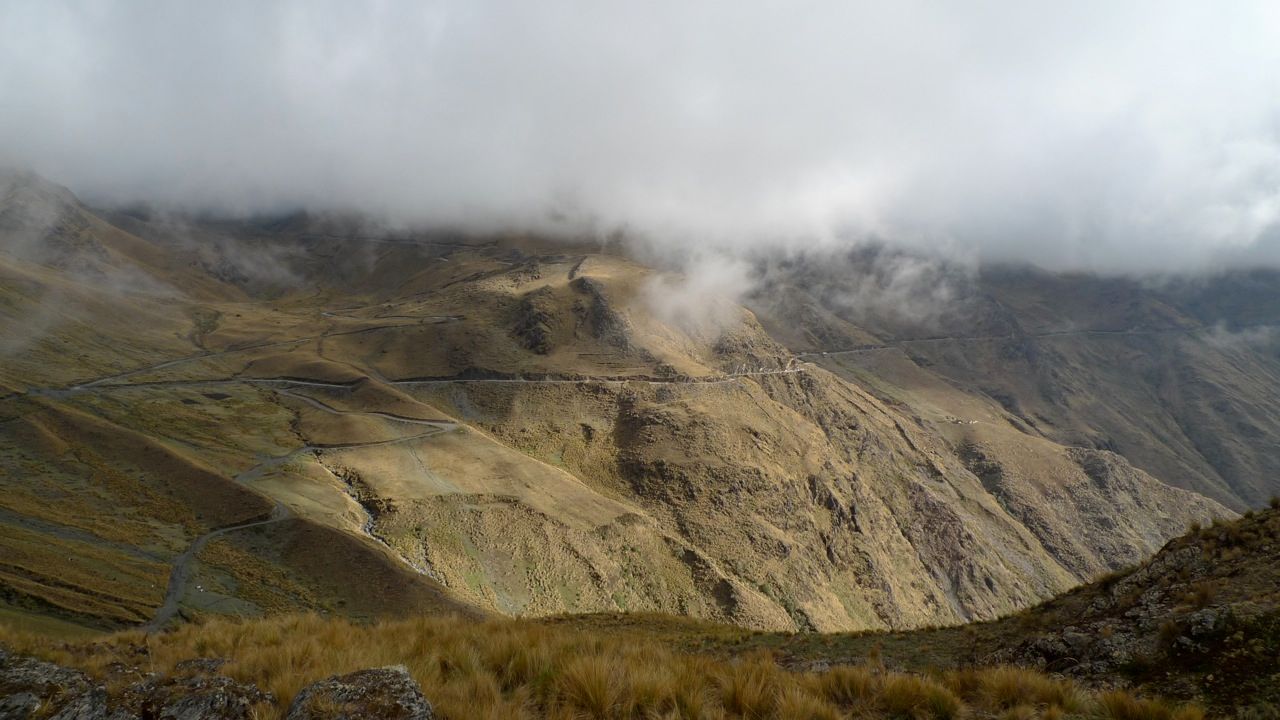
First night camp, at 13,000' we were glad not to be much higher for our first night out.

The next morning we backtracked to get water and ran into a bit of a roadblock. Pretty much everywhere you go in Bolivia and Peru there are animals grazing...
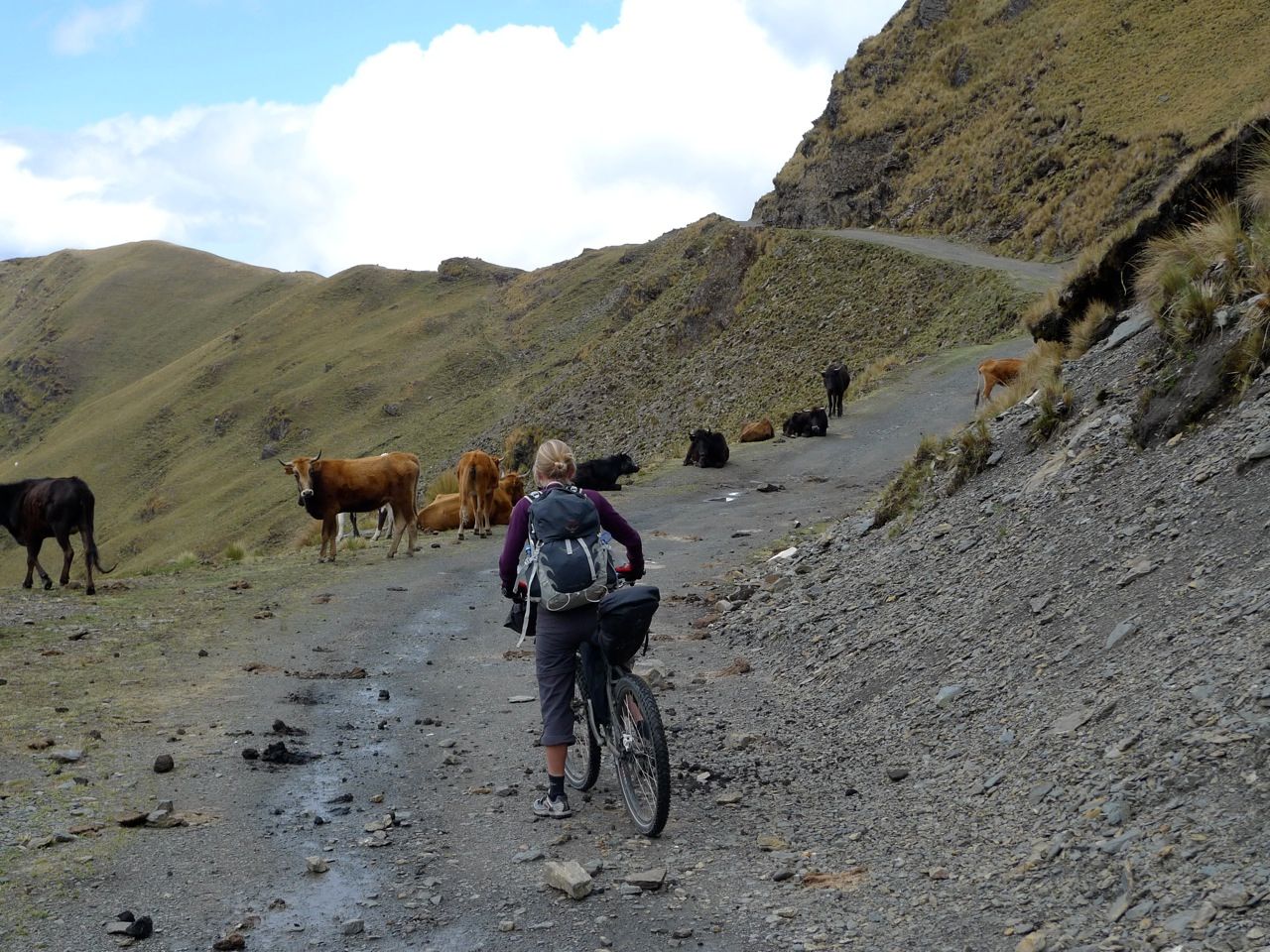
some nice cruising on level ground was nice to warm up with:
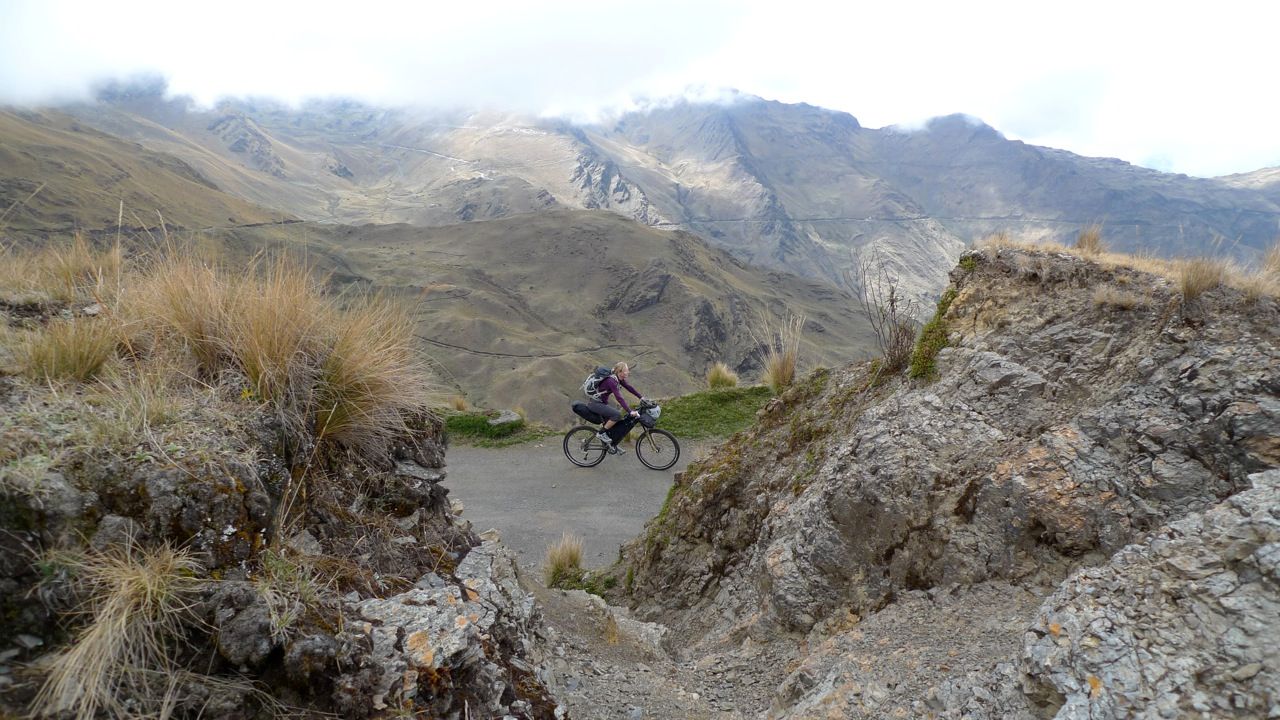
Pretty soon though we started descending, with dramatic views of the immense valley below us.

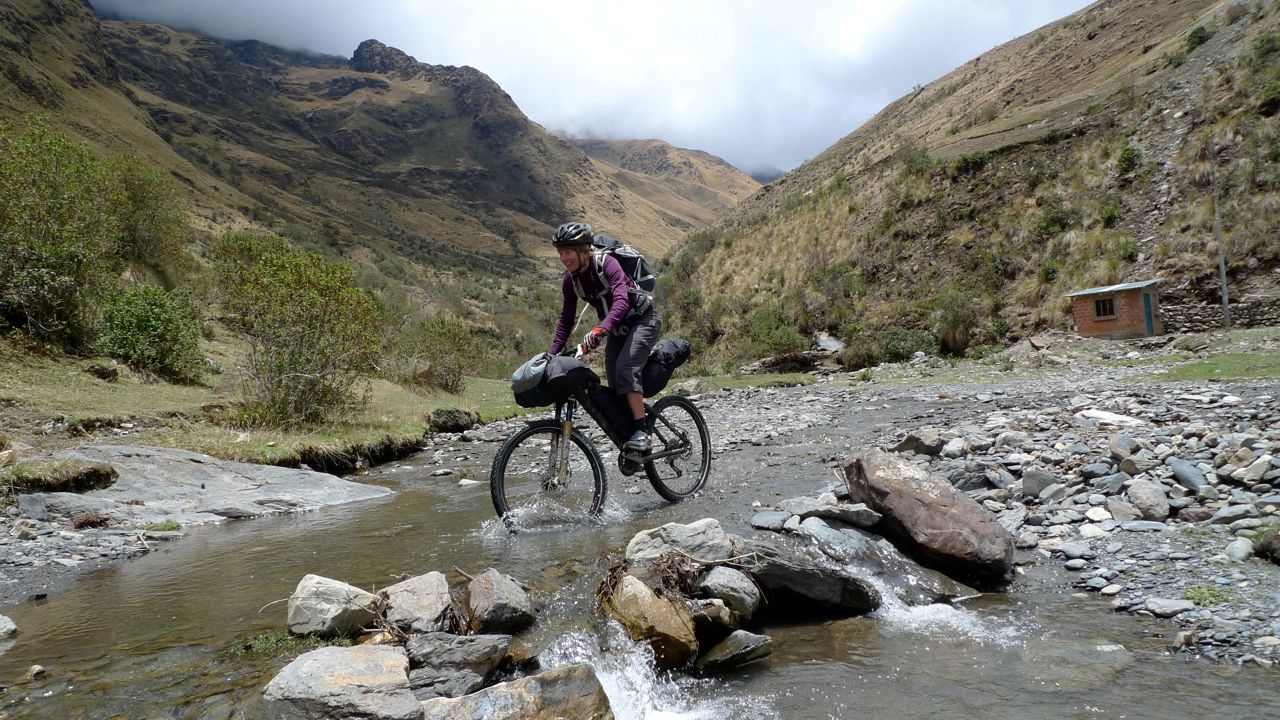
back down to treeline and some lush vegetation.
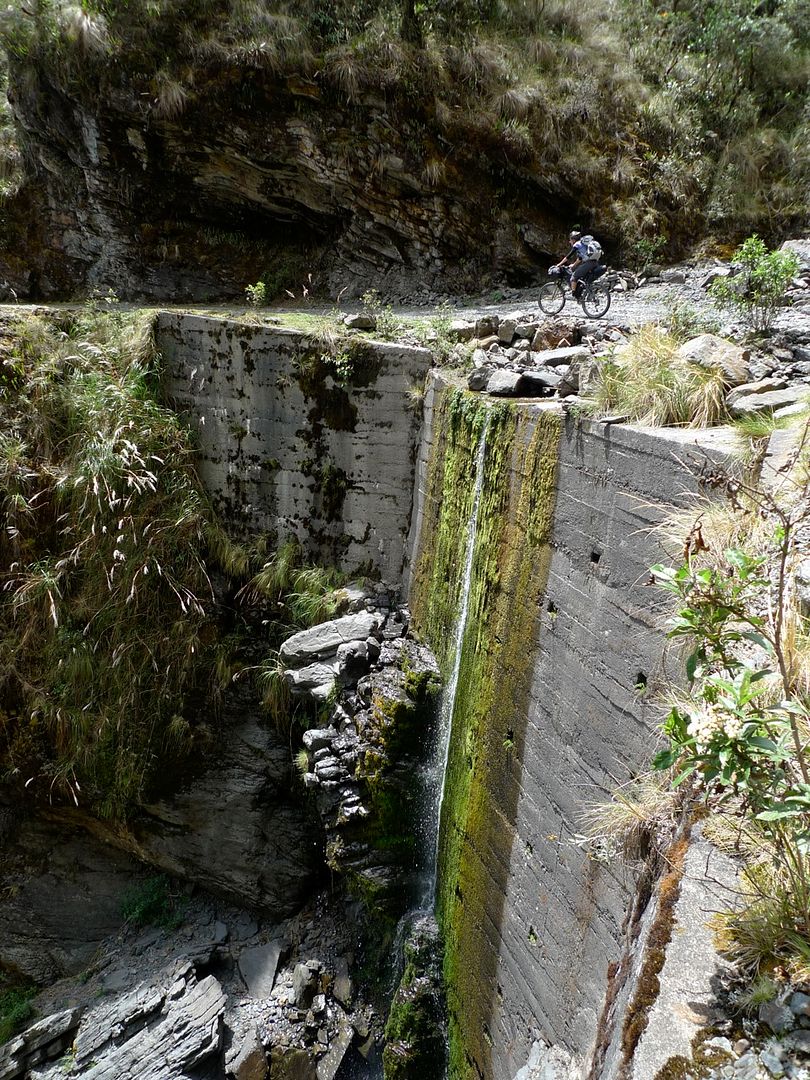
before long we encountered a split in the road, one branch dropped down, the other kept climbing up. After quite a bit of discussion we took the high road but wanted to ask someone to double check. Julie found a school so we approached it. When we did the entire class inside was pressed against the window and eventually poured out into the courtyard.

The man on the left is obviously the teacher, he was teaching these rural kids Spanish being that the native highland / altiplano language is Ayrama. It was a super fun interaction since I know about 3 sayings in Ayrama and the kids relentlessly made fun of me. "Extranheros muy interasante" yep, not too many gringos visit this little settlement on the hill.
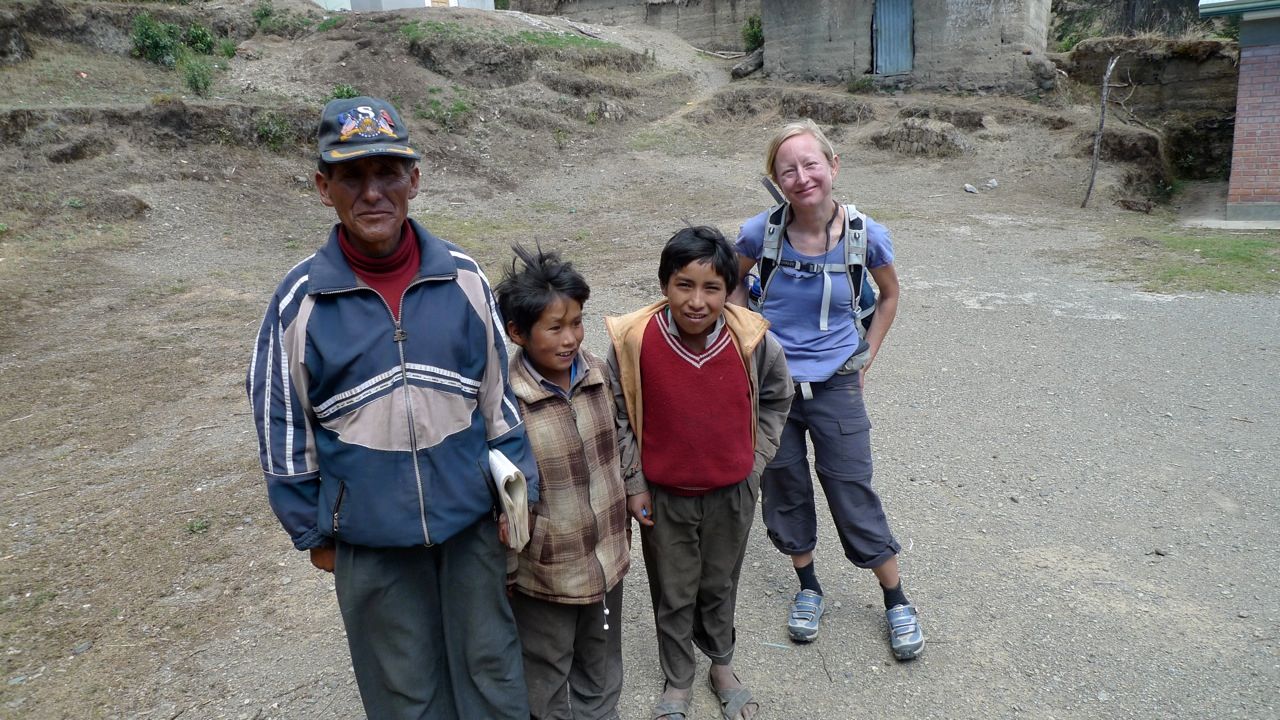
Back to climbing, we popped over this little saddle here...

my gut was acting up, zapping energy, so we took advantage of the first piece of flat ground we could find:
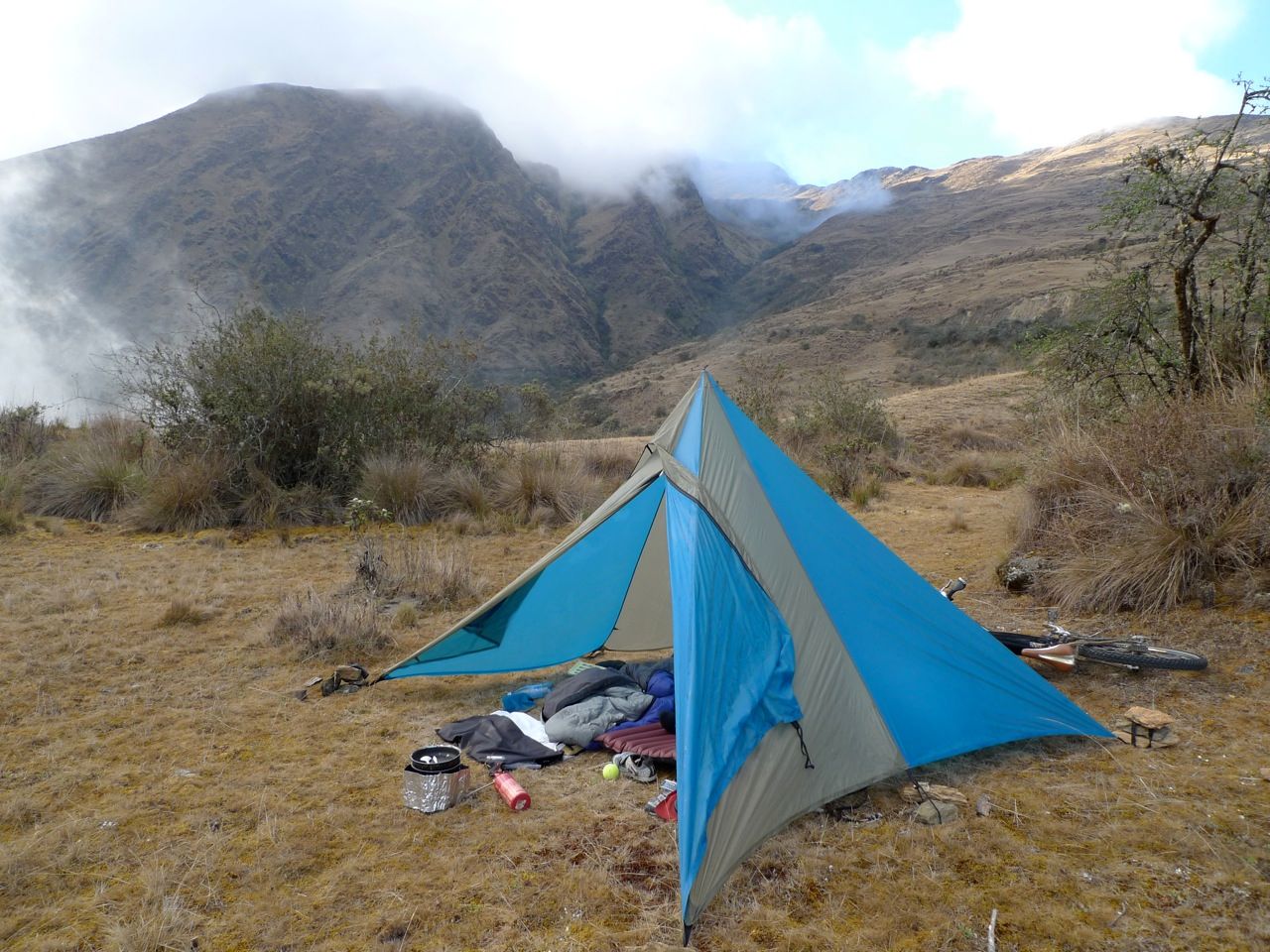
The next morning we rolled into Tacoma, a village on the main road from Sorata into the Yungas (tropics). Not too many bike tourists get to Tacoma either judging by the bewildered looks we received.
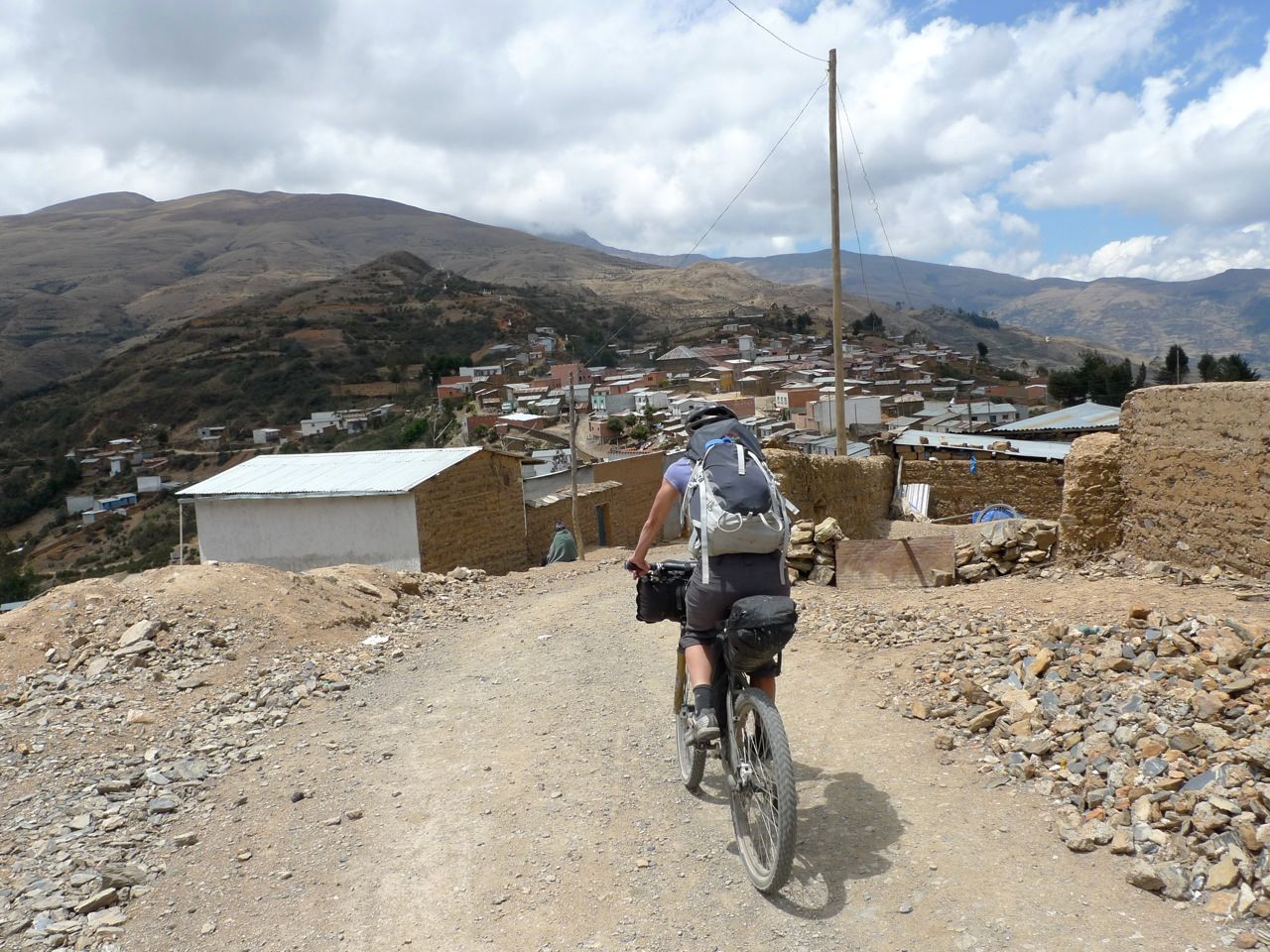
Back on the main road we basically backtracked the terrain we had just ridden, but only 2,500' or more lower. This meant that for all the valleys that we cut off by being high, we would now have to go in and out of on the return route.

Julie is actually in this photo, mid way left of center for scale, everything in Bolivia is huge!
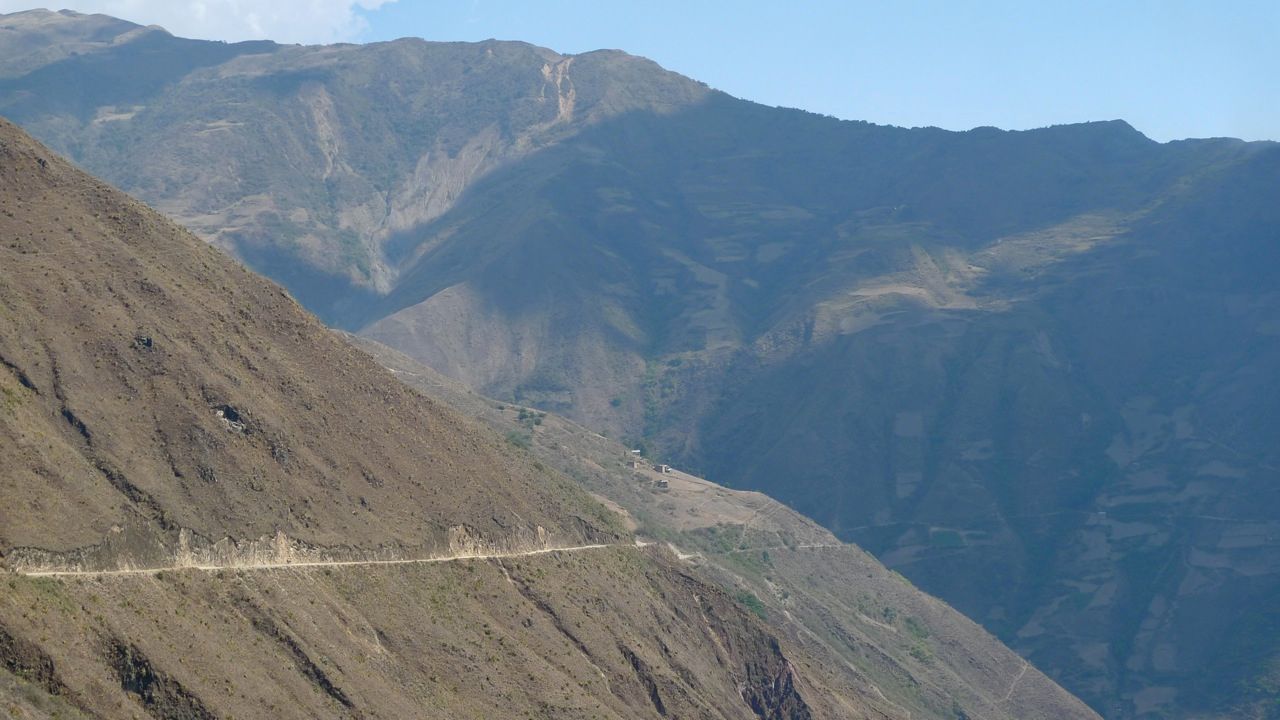
Heading towards the village of Quiabay. We were hoping to get a fat lunch of the usual top notch Bolivian Cuisine - fried chicken & fries, but had no such luck.
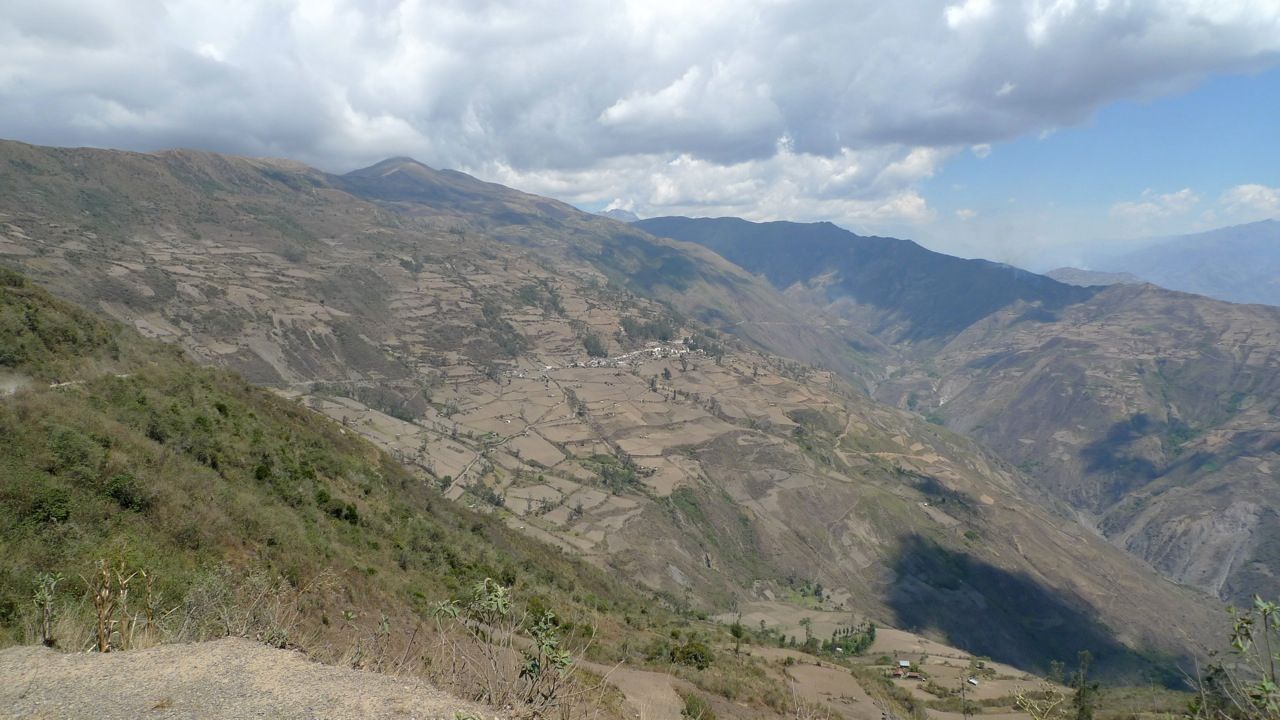
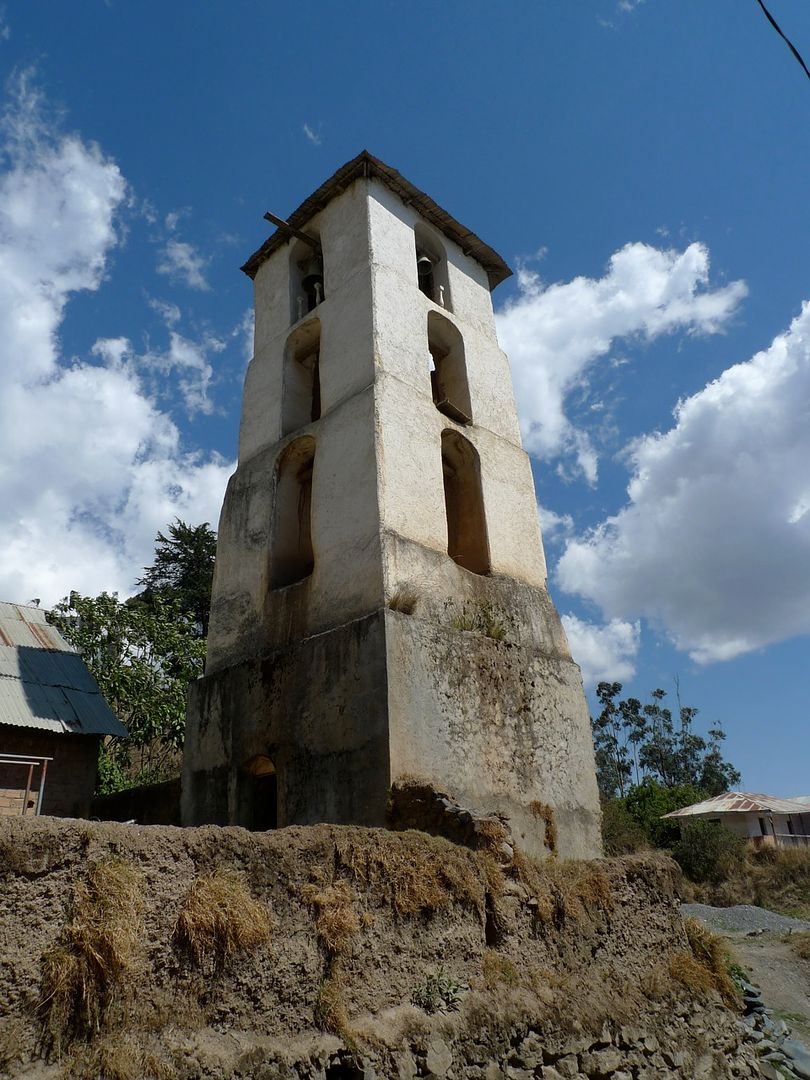
The typical tienda stop.. cokes and cookies...
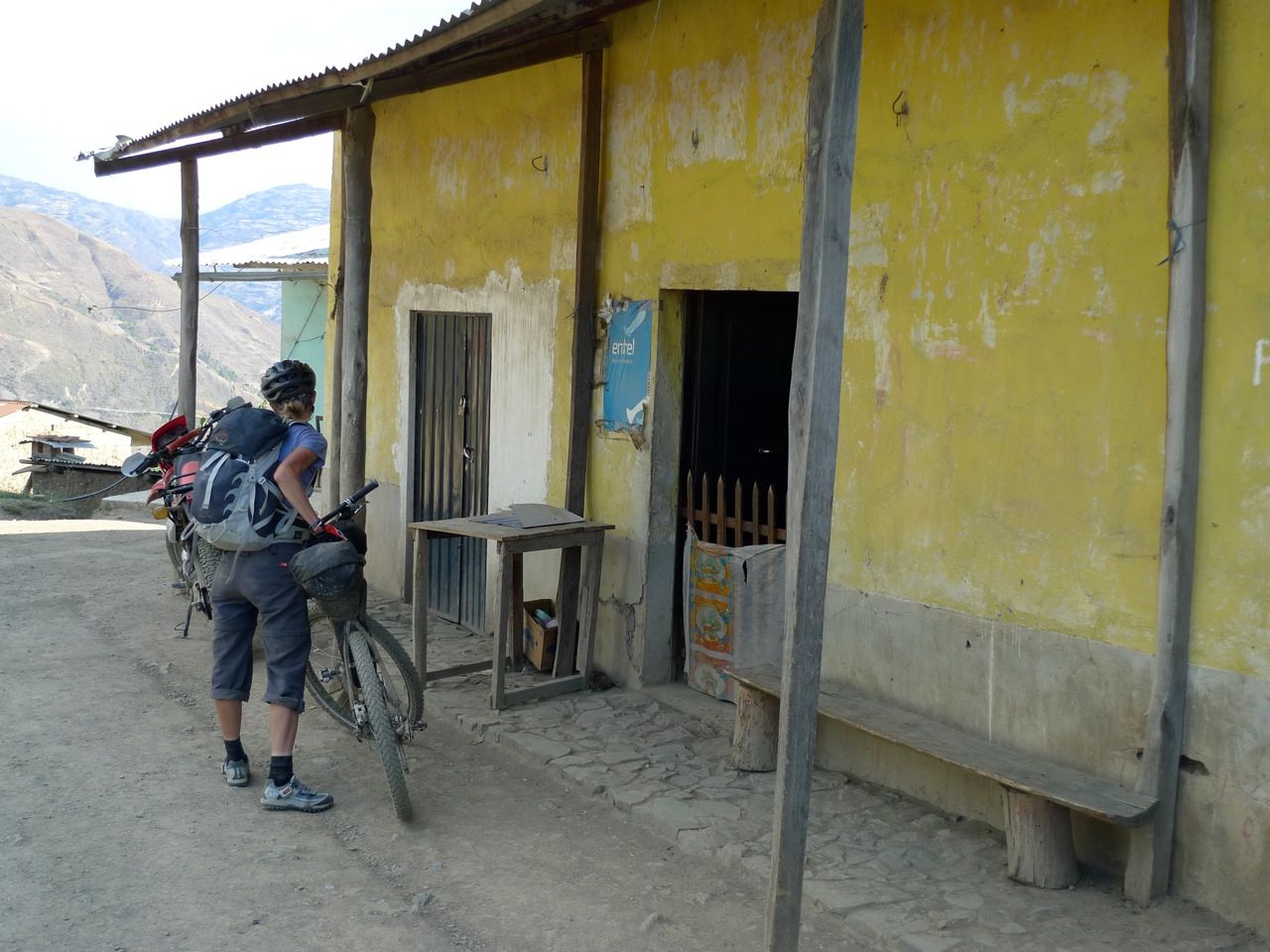
As evening gets closer the animals return home from grazing...

We had a bit of a problem finding a camp spot this night and ended up backtracking to a stream crossing and slept on a gravel cobble mix. Sometimes it's hard to find decent camping in populated area since any flat ground is usually either agriculture or covered in a mixture of llama, sheep, cow poop.
The next day was HOT and we were pretty tired, more valley traversing & climbing on the dusty road to complete the loop back to Sorata.
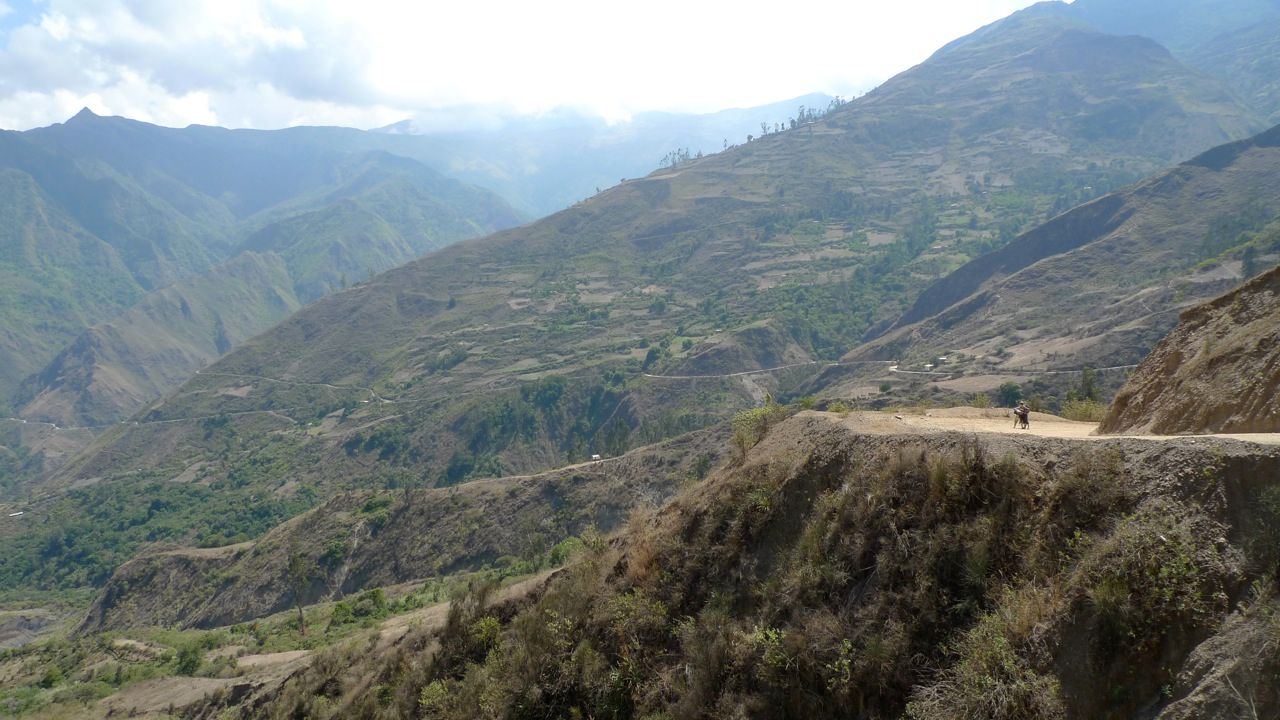
Eventually we made it back, and it turned out there was a big party going on. Turns out people were getting ready for Dia de Los Muertos.
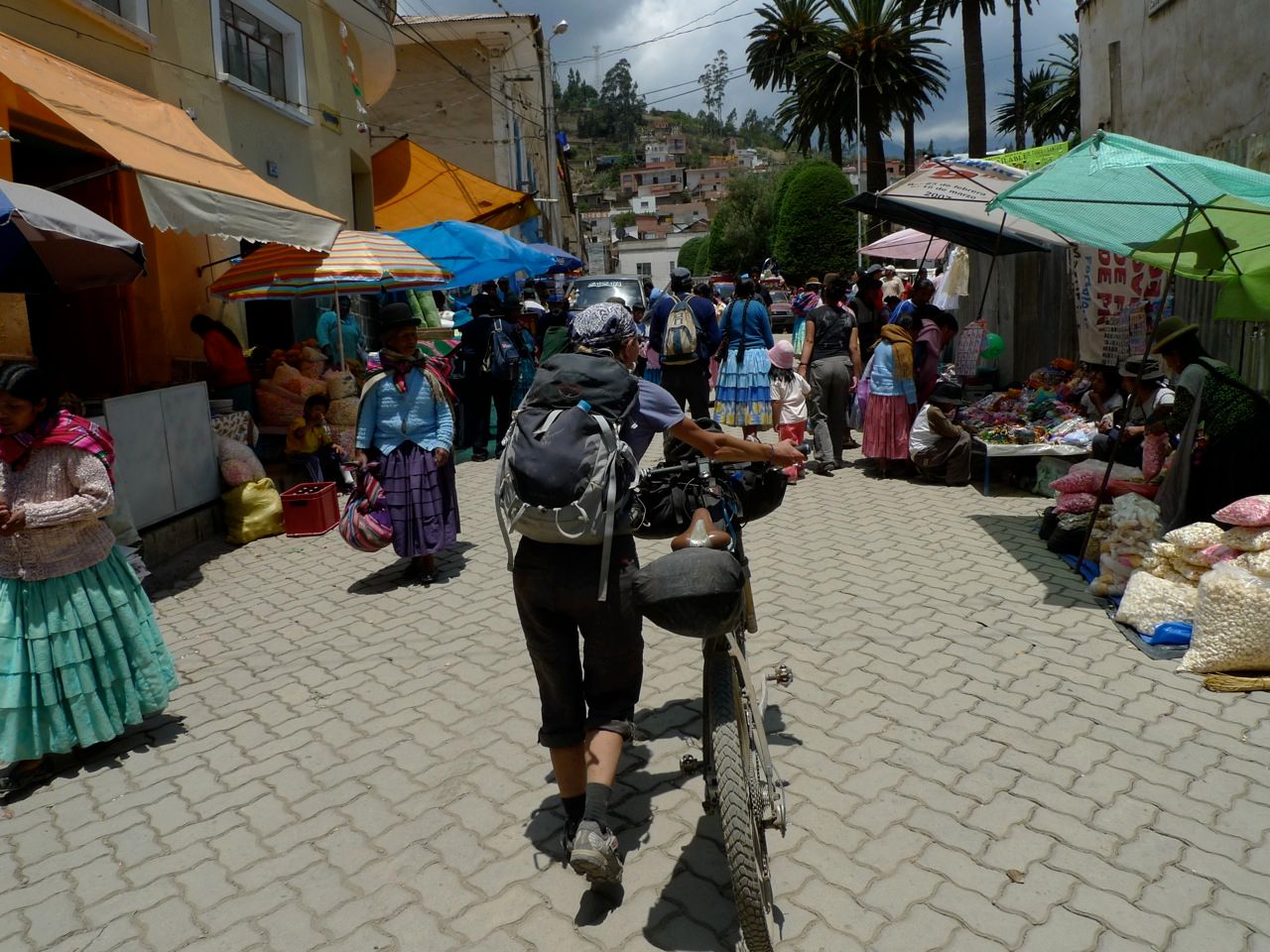
Great loop and shakedown for what was to come.